Feb 14, 2022
Mellon Conservation Fellow Karen Bishop shares her process for creating a replica of a seventeenth-century carved drawer and box.
In the final part of this series, Karen creates the feet and trim.
Lathe
Turning
After building the case and drawer, Karen moved on to the box’s finishing touches: molded trim and turned feet. Similar to the example at Bowdoin College Museum of Art, she made four small round feet, known as bun feet. These are made using a lathe, a machine that spins a piece of wood or stock. The operator of the lathe uses specialized cutting tools to shape it. Seventeenth-century woodworkers used a pole lathe operated by a foot pedal.
As part of her fellowship research project, Karen took a weeklong turning course at the Center for Furniture Craftsmanship in Rockport, Maine. There she learned how to safely operate a modern lathe and some basic turning techniques. She returned to the shop in Haverhill and made a matching set of four oak feet.
-
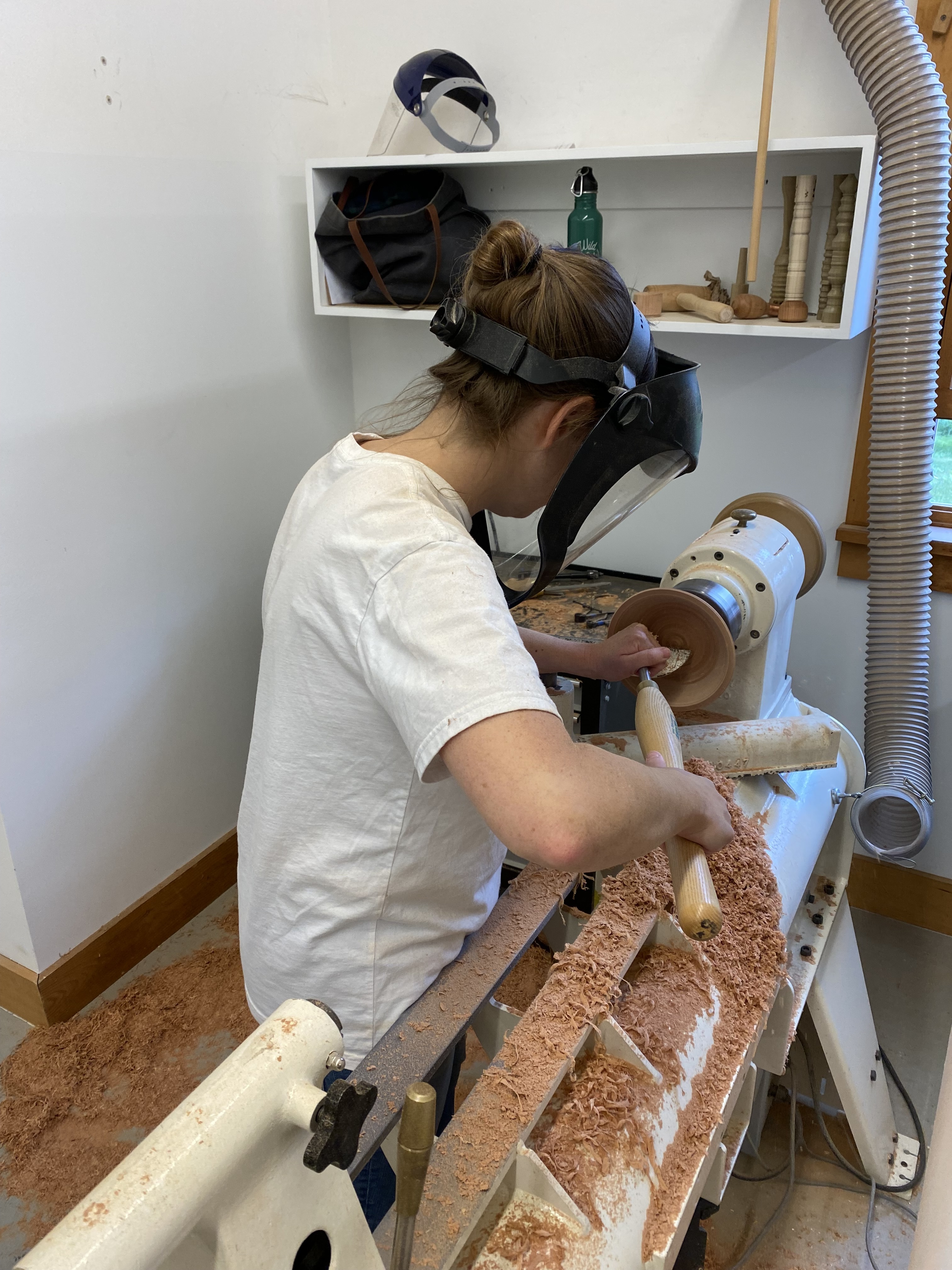
Karen learning to make a bowl at the Center for Furniture Craftsmanship -
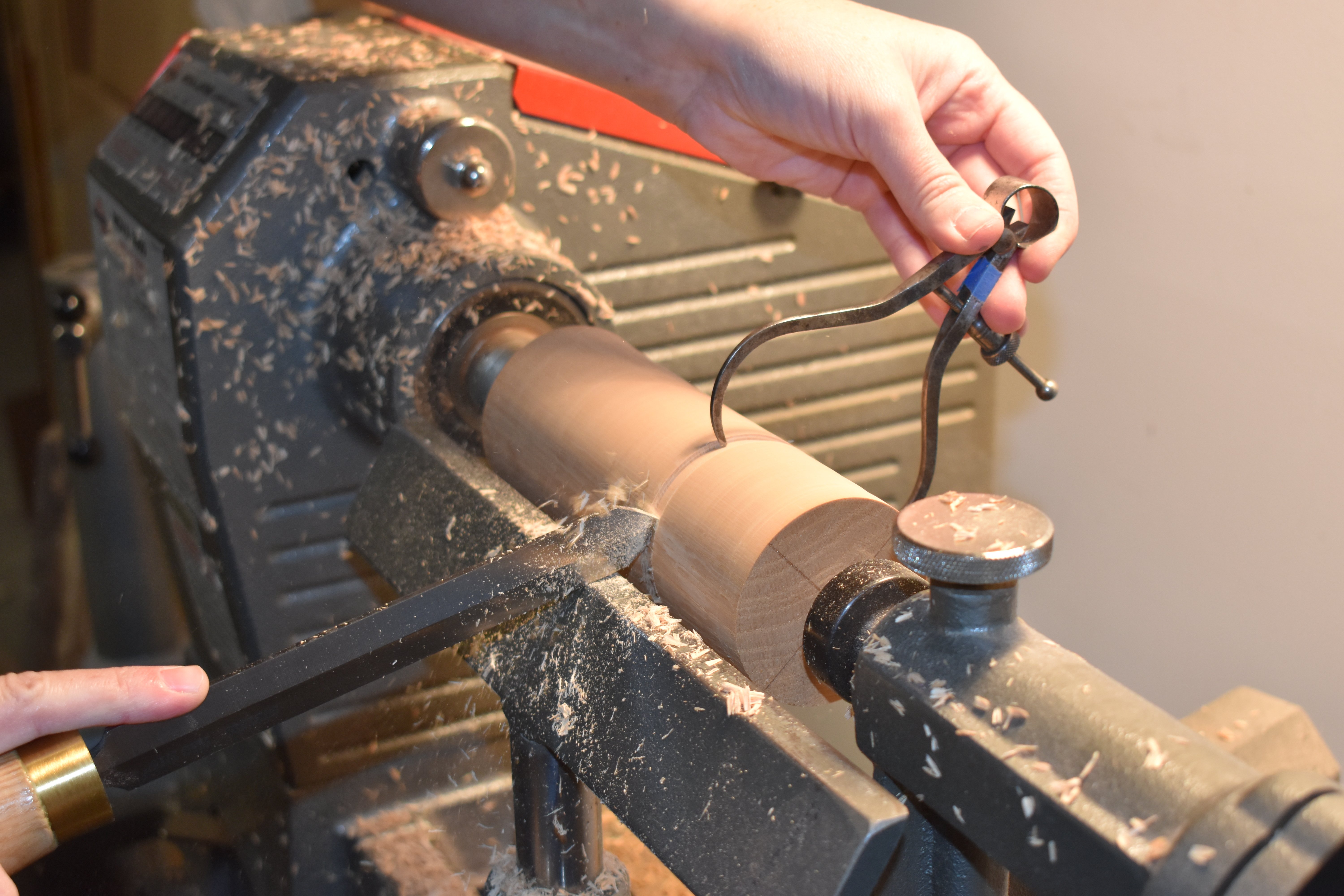
Karen uses calipers to measure and ensure consistent diameter
Tool Making
To recreate the missing trim, Karen made a custom molding tool called a scratch stock. She cut and filed a thin steel blank to match the negative space around the profile of the remaining original molding piece. Once mounted in a wooden handle, she could make repeated passes along a length of wood, allowing the blade to scrape away shavings until the desired molding profile was left.
-
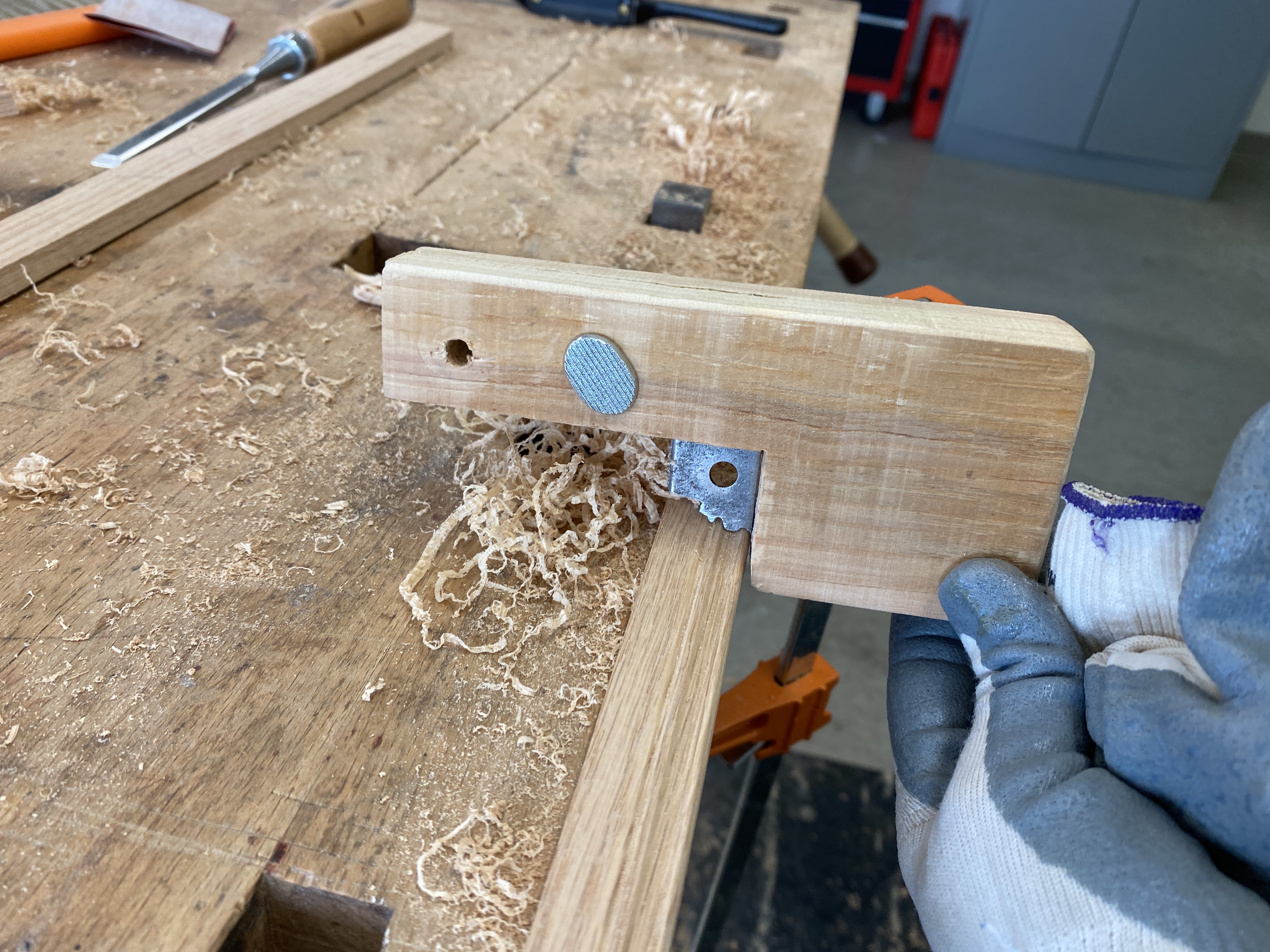
Custom made scratch stock used to profile trim -
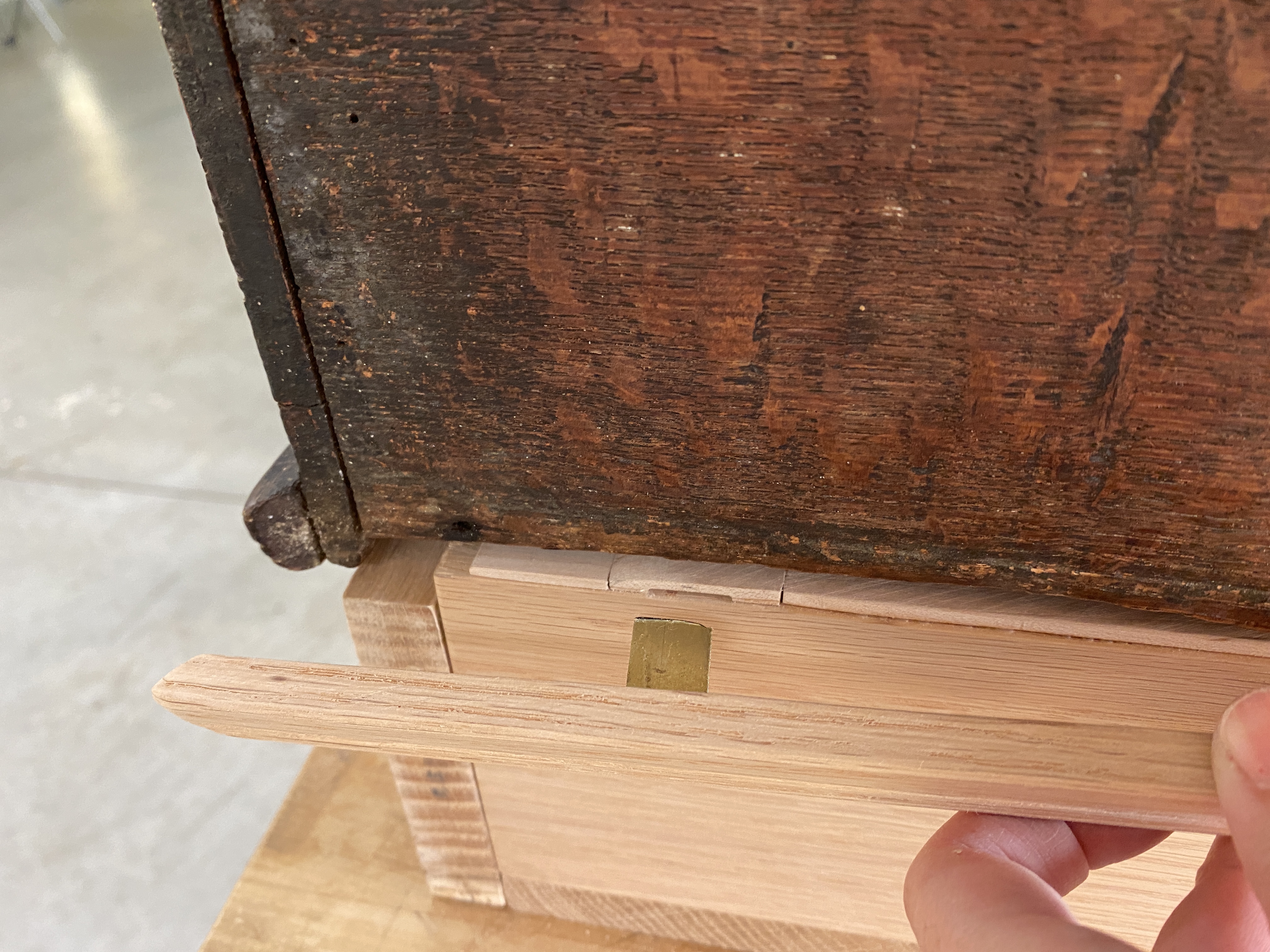
The trim is attached using a slot and L-bracket, allowing for easy removal
The base of the original box had deteriorated and there was no surface to attach the side trim. Karen solved the problem by applying L-brackets to the back of the trim. The L-brackets fit into slots on top of the reproduction. Now the trim is easily and safely removeable, granting access to the base of the original when lifting it on and off the reconstructed base.
Final Fit
After the reproduction was complete, the final challenge was to figure out how to attach the base and original top. The underside of the top was irregular and worn out. It needed even support to avoid putting pressure on the lowest points. Karen’s solution was to created a custom molded lining between the two pieces using epoxy.
To prevent the epoxy from getting residue on the wood, Karen shaped it between plastic wrap. After it cured and hardened, Karen glued it to the top of the reproduction. Now, the box can be safely and snugly placed on the base without the use of adhesive for metal fasteners.
-
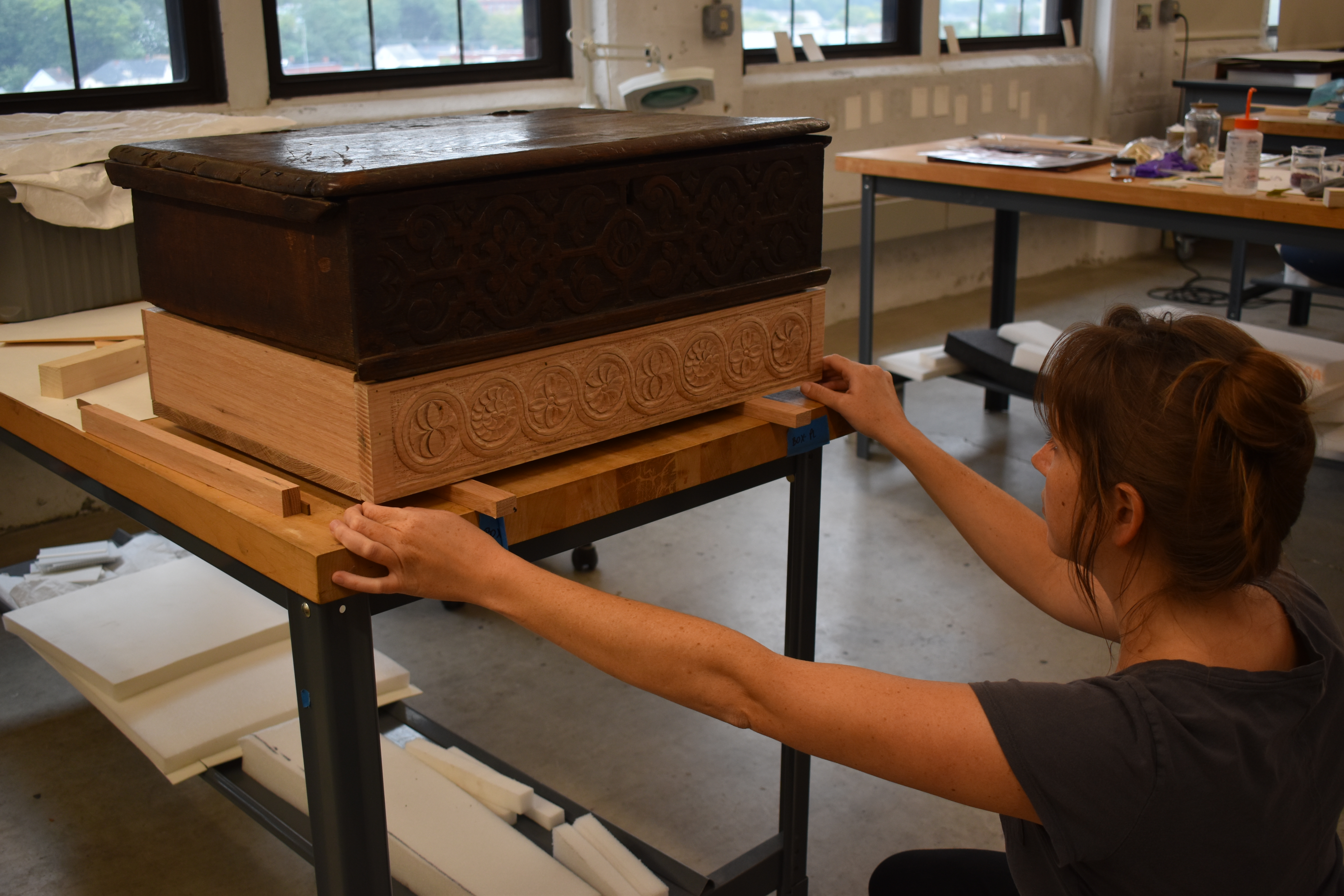
Karen squaring up the box and reproduction base. -
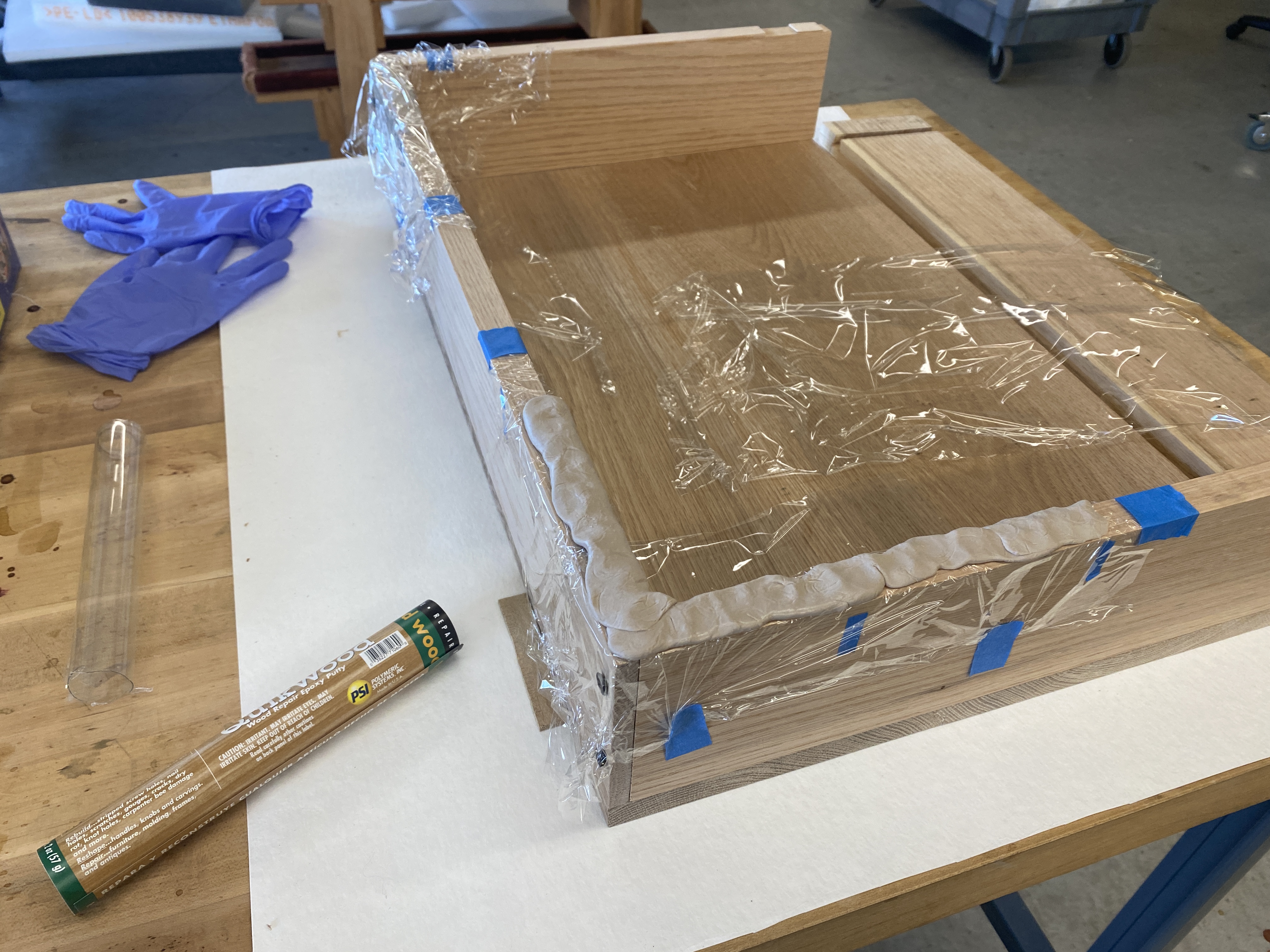
Epoxy layer being molded to fit underside of box.
The goal of the project was to create a reproduction that functioned like the original seventeenth-century box, while making it clear which portion is the genuine artifact. In addition to not varnishing the new drawer, Karen followed the customary practice of stamping each new component with a date. This project provided Karen with an opportunity to learn about traditional wood working techniques and to contribute knowledge about an important piece in Historic New England’s collection.
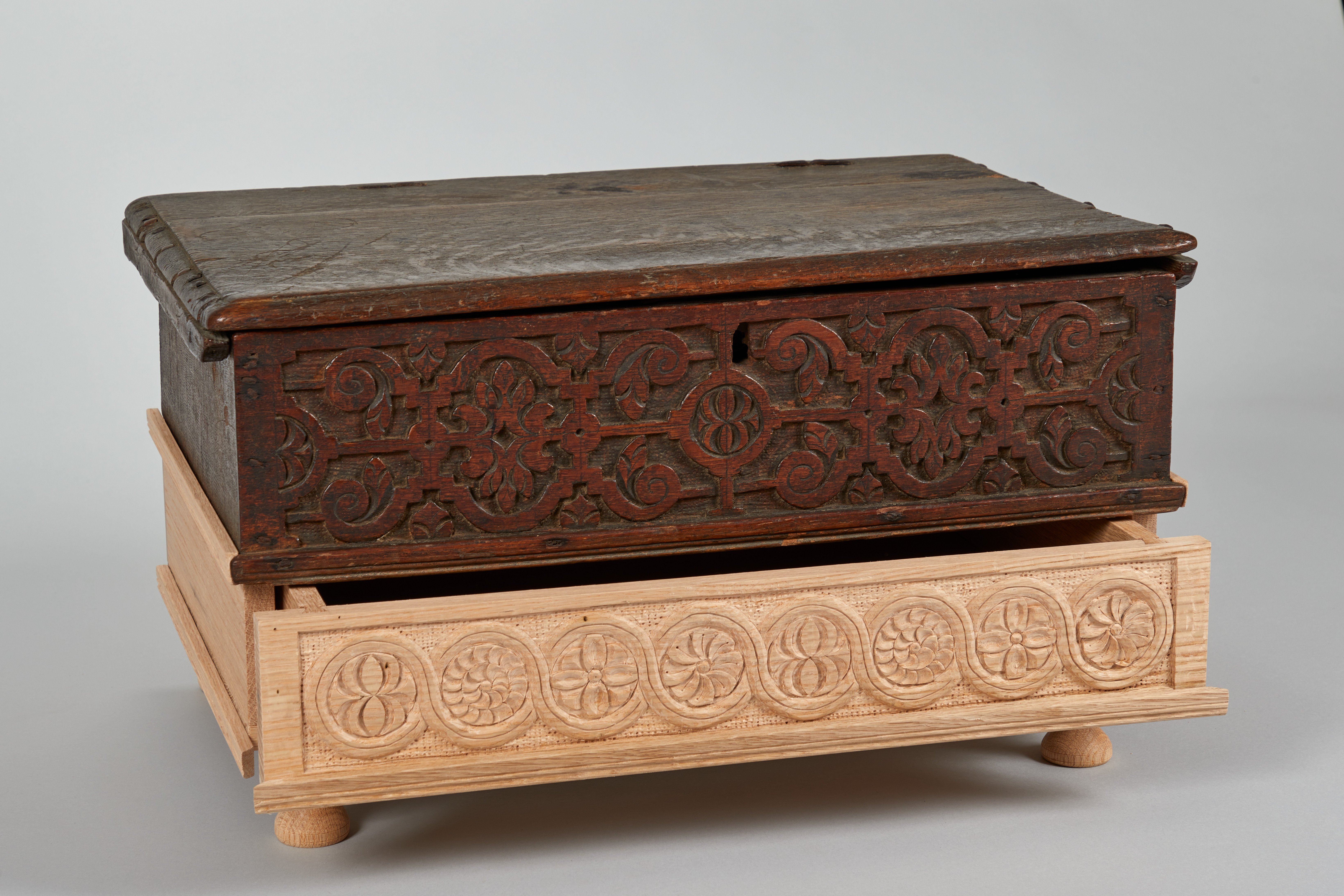
Karen Bishop is the Mellon Conservation Fellow at Historic New England.
